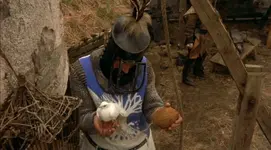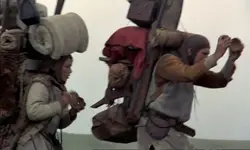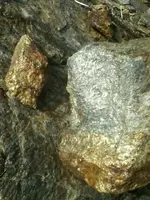"Bad Robot" Lift Ones Wallet...Possibly!...Lift Ones Research...Never!
If you are going to lift my information Robot at least get it all! When I wrote that coconuts or coconut fibre did not come into the Atlantic Basin until brought there by the Portuguese, it was in 1499 to 1500 and not the late 1500s.
As for the Templars, they were based in the Eastern Mediterranean from the 12th until the very early 14th centuries. During this same period India also was trading there. Coconut fibre made into "coir" by Indian merchants was a major industry in that country and was used as rope and packing. In my opinion there is no other way for coconut fibre dated from the 13th to 14th century to have been in Nova Scotia other then to have been brought in Templar Galleys, that had just recently (1307) left Cyprus.
I believe that Rick and Marty are spot on if they think the Templars are responsible for this mystery, although I also don't believe it is still on Oak Island.
Cheers, Loki
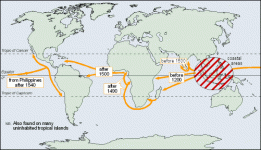
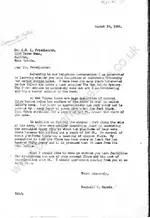
Loki
My research dates back to my post of October 31st, 2014 and was based on the migration of the coconut.
Which to me makes a strong case against the Knights Templar ever having access to this quantity of coconut fiber...Unless they "Portaged" their boats over 1000 miles to the "East Indies"!
Regards,
Robot
Post #19 October 31st, 2014 "The Coconut Fibers are the key to this hunt"
How 14th Century Fiber and 18th Century Items could be Compatible
Yes, the argument of the Coconut Fiber carbon dating has been a stumbling block with my theory.
All the wood samples carbon dated support my theory's 18th Century time period.
All the items found on the island support my theory's 18th Century time period.
But how could 2 or maybe 3 carbon testings’ (if the Lagina brothers claim to having done one) all arrive with the 14th century as the probable date for this fiber?
It was not until I reread R.V. Harris’s letter August 19th, 1966 where he presumed the massive amount of Coconut Fiber came from the East Indies that I realized I had overlooked another possibility.
This was the probability that these Coconut Fibers did indeed come from the East Indies and not from the Caribbean and Central America.
Where I was wrong was in presuming that in the 18th century there was an industry in the Caribbean and Central America producing Coconut Fibers and these Fibers came from this part of the World.
It makes more sense that the Coconut Fiber Industry was only in Malaysia.
Spanish ships from the East Indies would cart supplies and trade to Havana and off load and store this packing material prior to taking the gold shipments back to Spain.
The Keppels would have had boat loads of this material stored at Havana, readily available for their plans at Oak Island.
This allows for the carbon dating of the Coconut Fibers to be 14th Century, while all other stated items found (Wood Pieces and Wood Platforms, Block and Tackle, Cornish Poll-Pick, Ax, Scissors, Shoe, Parchment Paper, Ruler, Anchor Flute, Nails, Metal Fragments, Chain and Boatswain Whistle) to be compatible with the 18th Century, and conform with the Freemasons as builders of The Money Pit at Oak Island.
This allows for the Scientist who documented the history of the Coconut Seed to be correct in that although the Coconut Tree arrived in the Caribbean during the 16th Century there was not a flourishing Coconut Fiber Industry outside of Malaysia prior to the 1700's ad.
This theory would still disqualify Vikings, Knights Templar and Druids as possible builders, as they did not have access to this quantity of fibers in their time period from the West Indies or East Indies.



 . But I'm not sure
. But I'm not sure
 WHY DONT YOU CHANGE TO CABLE
WHY DONT YOU CHANGE TO CABLE All holes are the same, eventually they will fill up with something.
All holes are the same, eventually they will fill up with something. np
np


 NP
NP